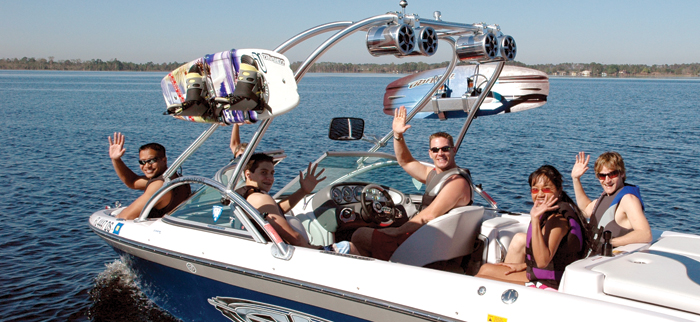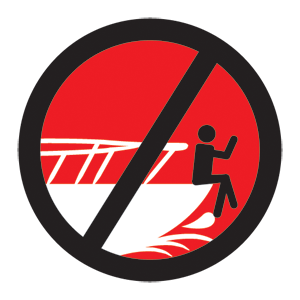Ride Inside: Avoid the risk of bow riding

Responsible boaters; Coast Guard photo
Few people would consider allowing a family member or friend to ride on the hood of their moving car.
Yet every summer, boat operators permit their passengers to ride on the bow—legs dangling over the front—or perch along the sides, or sit on the stern.
The practice, called bow riding, is dangerous and sometimes deadly. And in Maryland and many other states, it is illegal.
Safety patrols
This summer, the Maryland Natural Resources Police and the U.S. Coast Guard are urging boaters to stay safe and Ride Inside their vessel. The campaign is rooted in education and outreach, with signs at popular launch ramps and boat rental shops. It also will feature reserve officers handing out literature at marinas and ramps.
“Bow riding is considered reckless and negligent operation under Maryland boating laws,” explains Superintendent Col. Robert “Ken” Ziegler Jr. “The penalty is up to $500 for a first offense, but often—and sadly—the ultimate price is much higher. The solution to this problem is simple: Ride Inside.”
 Fatal consequences
Fatal consequences
There is no denying the thrill of riding all the way up front on a hot, summer afternoon. But, in the case of youngsters, beneath the exhilarating sensation of being on an amusement park ride lurks the danger that they are more likely to lose their grip and bounce off the front of boats.
Last summer, a young boy on a family outing in Ocean City slipped from the bow of a rented pontoon boat and was swept into the path of the propeller. Despite quick action by medically trained people who were in a nearby boat, the youngster died.
There were at least three other serious bow riding accidents in the state last year that resulted in injury.
Boating rules of the road
Bow riding is just one of the violations listed under the regulatory umbrella of reckless and negligent operation. Other offenses are drunken or drugged operation, speeding, boating in a swimming area, and hazardous operation of a personal watercraft.
Pontoon boats and smaller motorboats that lack factory-installed seats, railings and non-skid decks are favorite platforms for bow riding. Slipping from the bow of a pontoon boat is particularly perilous because the victim is channeled between the two pontoons and directly into the propeller.
Bow riding is an activity guaranteed to trigger a response from officers, who will stop boaters who appear to be in violation of state law and issue a written warning. Egregious violations or repeat offenses will result in a citation.
Other factors also conspire against bow riders.
“You might be a skilled boater with many years of experience, but the guy in the next boat may be new or rusty,” says Ziegler. “One boat can hit another or an inattentive boater can cut across your bow and create a wake that can toss someone riding into the path of the boat.
Regardless of who’s at fault, the person riding on the bow is the one who pays the price,” he says.
The Ride Inside campaign will extend throughout the boating season.
Article by Candy Thomson—public information officer.
Appears in Vol. 20, No. 3 of the Maryland Natural Resource magazine, summer 2017.


 1-888-373-7888
1-888-373-7888 233733
233733